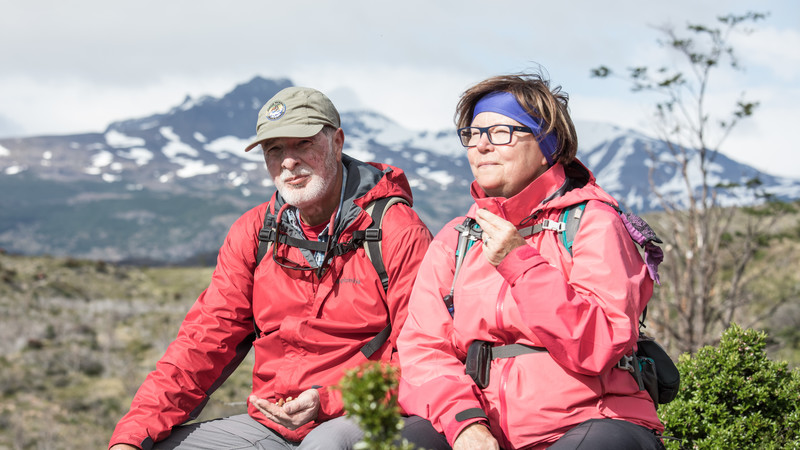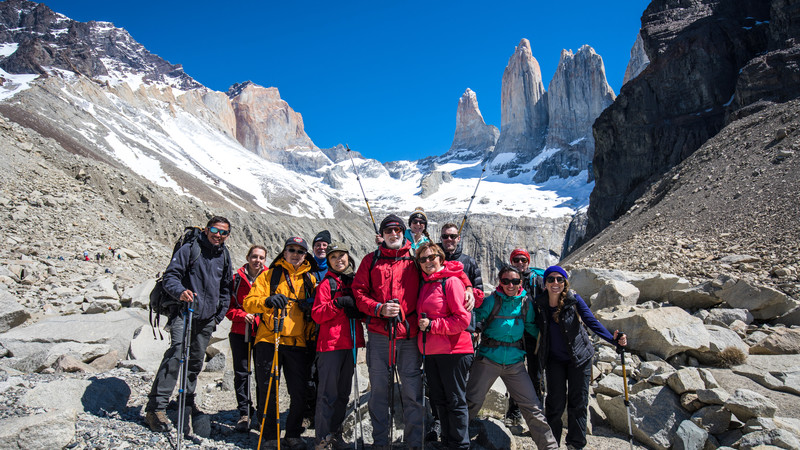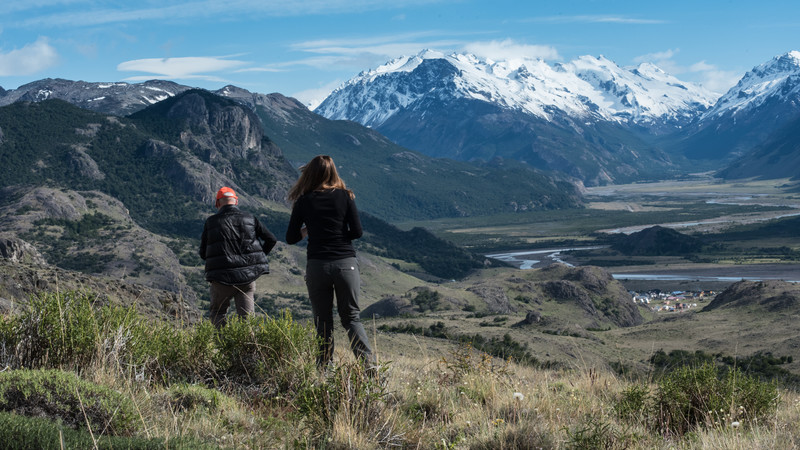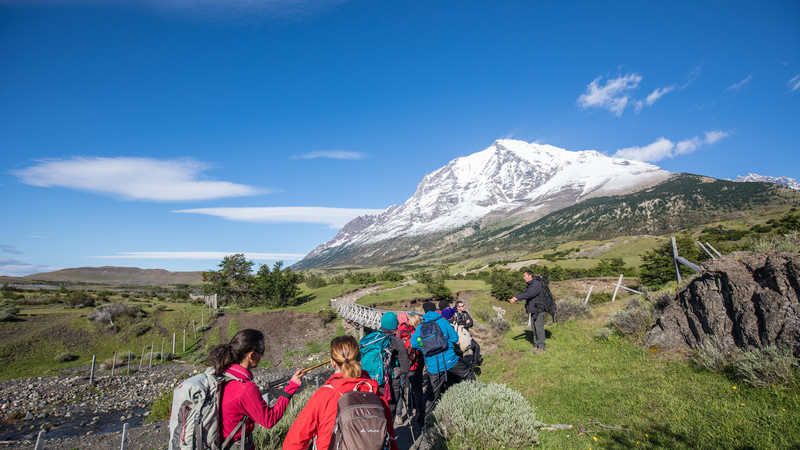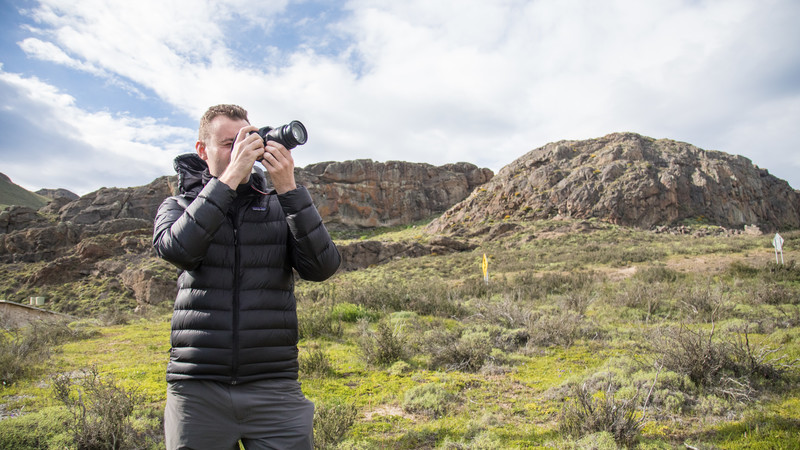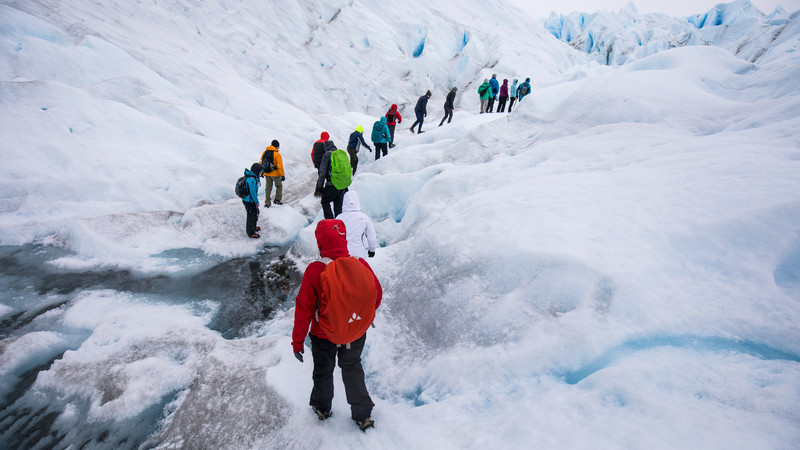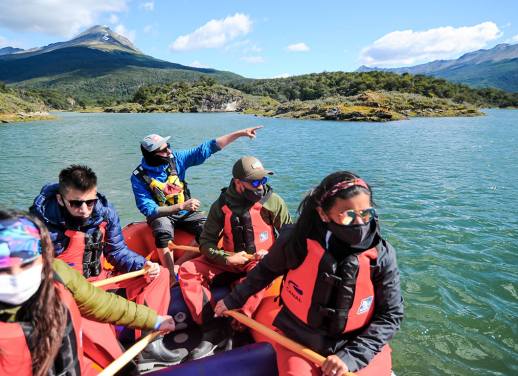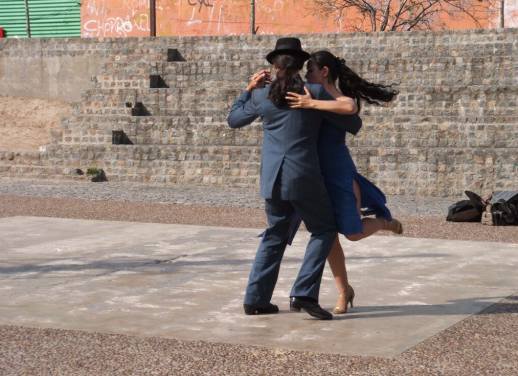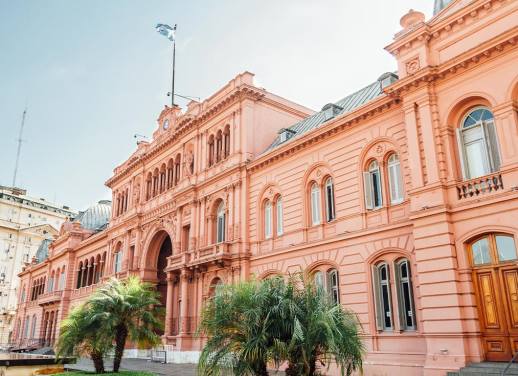Patagonia captures the imagination and excites the senses like few places on Earth.
Why? Because the southernmost tip of South America offers landscapes that almost defy belief: jagged peaks, glacial fjords, grasslands, rainforests, deserts and more. In fact, the magic of this region – one that’s shared by both Chile and Argentina – is so surreal that it’s easy to Google hikes in awe and plan photo ops in earnest while completely forgetting the nitty gritty of what to bring.
Well, have no fear. You can get back to thinking about the fun stuff because here at Intrepid, we’ve done the hard work for you. We had a (virtual) sit down with Yasmina Becker, our Deputy Ops Manager for Argentina, for ALL the packing lowdown.
Below you’ll find exactly what you need to bring on a trip to Patagonia (whether it’s with Intrepid Travel, or not), as well as vital insights into withdrawing money, the temperatures you should expect, and so much more…
Recommended things to pack for a Patagonia trip
- Soft and/or hard copies of all important documents
-This includes documents such as air tickets, passport, vaccination certificates and more
-Keep the hard copies separate from the originals. While not valid, a copy makes it much easier to obtain replacements if necessary - Water bottle
-We recommend at least a 1.5 litre capacity (or two smaller bottles)
-Please remember that the sale of bottled water contributes to an enormous environmental problem around the world, since a large proportion up in landfill - Electrical adapter plug
- Personal medical kit
-Your Intrepid guide will carry a large kit but we recommend you carry items such as mild pain killers, electrolytes and band-aids - Insect repellent
- Alarm clock
-Or phone that can be used as an alarm - Head torch or standard torch
-And spare batteries - Day pack
-We recommend a day bag that has easy access to water bottles (external side pockets) or a day pack with a built in hydration bladder.
-This bag only needs to be large enough to hold the few things you need during the day (hat, water, camera, snacks, rain jacket etc.) - Waterproof, well worn-in walking boots
-Good quality, comfortable footwear is essential. Whatever you wear on your feet, the most important thing is comfort. It is vital to ensure your boots are well worn-in and lightweight
-Ankle support and waterproofing is recommended, but if you already have something comfortable with good grip on rocks then don’t go rushing out to buy new boots – you are better off with your well-worn in pair! - Walking clothing
-It’s best to bring clothes that can be layered so you can adjust layers according to the ever-changing weather - Waterproof jacket and pants
- Thermal underwear
-This is highly recommended as it is light and will keep you warm at night - Towel (for showers) and basic personal toiletries
CHECK OUT INTREPID’S RANGE OF SMALL GROUP ADVENTURES IN PATAGONIA
Hotel tip from Fernando Rodriguez, Intrepid’s Ops Manager in South America:
The gas is almost free in Patagonia so the hotel rooms and restaurants can be a bit overheated. So don’t bring thick woolly pajamas!
Optional things to pack for a Patagonia trip
- Ear plugs to guard against a potential snoring roommate
- Phrase book
- Flip-flops (AKA thongs/ jandals) for campsite showers
- Lip balm
- A money belt (in general, avoid bringing unnecessary valuables and be sure to use your hotel safe)
READ MORE: EVERYTHING YOU NEED TO KNOW ABOUT TREKKING IN PATAGONIA
Laundry services in Patagonia
Laundry tends to be more expensive in Patagonia than in other parts of South America. Expect to pay anywhere from ARS150 to ARS350 (USD10 – USD25) for a 2kg bag.
It’s best to wait for a two-night stop in order to make sure you get it back in time.
What bag to bring to Patagonia
A backpack is recommended, and is basically a must if you’re camping. When camping, the bag goes inside the tent, so the smaller the bag, the more space you will have. You can take a suitcase if you are staying in a hotel, but keep in mind that many streets are not paved, so the wheels may not work well if you need to walk a few blocks to or from your accommodation.
A wheeled suitcase will be appropriate if you are doing a more upscale ‘Comfort’ Intrepid trip. This is because you’ll be transferred everywhere and your accommodation will have a lift.
Hiking poles and sleeping bags in Patagonia
Hiking poles and sleeping bags can be easily rented anywhere there are treks available in Patagonia, for a reasonable price. Unless you can fold your hiking poles, leave them home. Some hotels will even let you borrow them for free.
READ MORE: WHAT IT’S REALLY LIKE ON AN INTREPID TRIP THROUGH PATAGONIA
Withdrawing money in Patagonia
Depending on the destination, it might be challenging to withdraw money, so you might want to consider taking enough cash from the last big city/airport you are at before going to Patagonia. Bigger cities like Bariloche or Punta Arenas are not an issue, but smaller towns like El Chalten, or el Calafate, or even Ushuaia can be problematic. Though they might have a few ATMs, only one or two will work for foreign cards, and they run out of money quite easily.
It’s worth knowing that many activities can only be payed for with cash and the daily limit to withdrawing cash in Argentina is pretty low (about 150 USD at the moment). Patagonia is still pretty safe – unlike bigger cities like Buenos Aires – so carrying bigger sums of money is not as dangerous.
What to know about the temperatures in Patagonia
What is the coldest time of year in Patagonia? How cold does it get? And how many layers would you need for this time?
The coldest time is during winter (June, July and August). It can get as cold as -3°C, especially at night. Consider wearing three warm layers on top of a thermal t-shirt. Ideally this would include polar jackets (a thin one called micro polar) and a thick one (Polar 200) as well as a warm, waterproof jacket on top. For your legs you will need thermal leggings with waterproof trousers on top.
This clothing is particularly important if you are camping and/or hiking, since strong winds and rain are common all year long. It is important that the first layer is thermal only when you are planning on being pretty active.
If you are not planning on hiking, and are staying in a hotel, you won´t need waterproof gear, as long as you take an umbrella. You could then replace the polar layers with a feather jacket.
Gloves and a hat are always recommended, regardless of the activity.
SUBSCRIBE TO INTREPID’S NEWSLETTER FOR TRAVEL TIPS, COMPETITIONS & GIVEAWAYS & MORE
What is the warmest time of year in Patagonia? How hot does it get? And how many layers would you need for this time?
The hottest time is during summer (November, December, January, February). It gets as hot as 25°C (and could get even hotter). The nights are still pretty cold, so you will need just as many layers as in winter, especially when camping.
If you are not camping, you can leave out the thicker polar layer. A micro polar jacket will be enough for when indoors and you can put a warm jacket on top when outdoors.
Kitted up and ready to embark on the adventure of a lifetime? Check out Intrepid Travel’s range of Patagonia trips.

